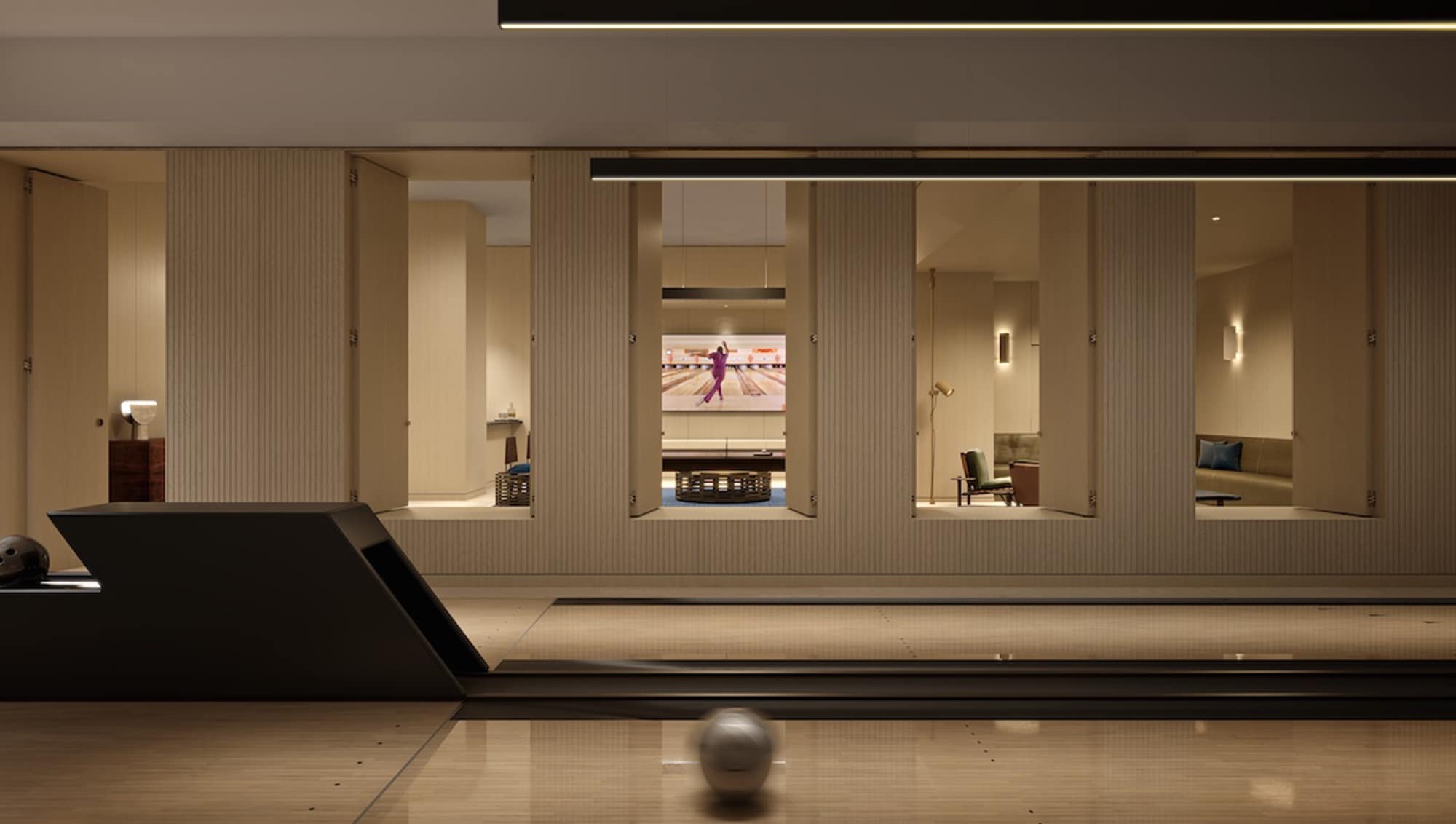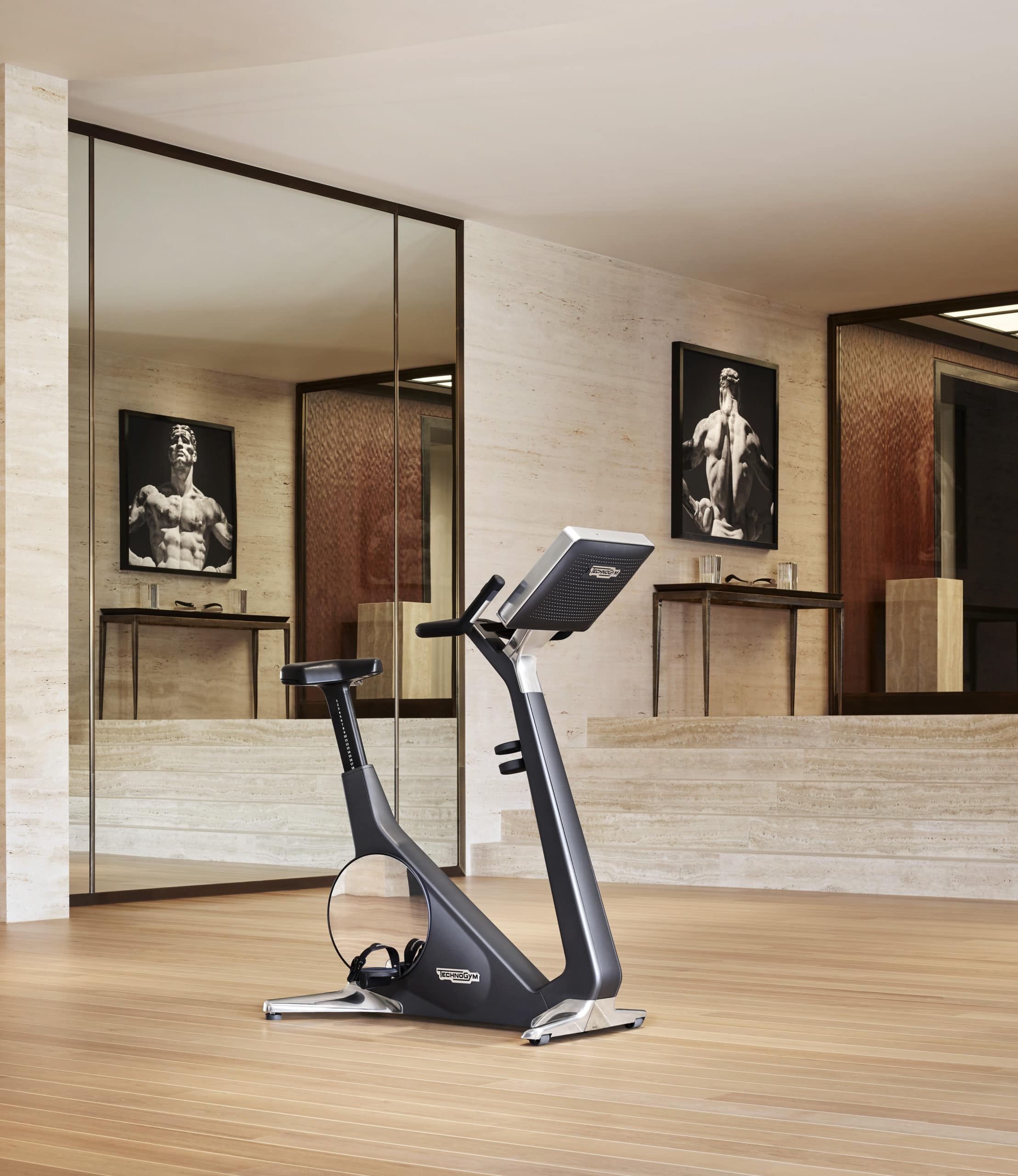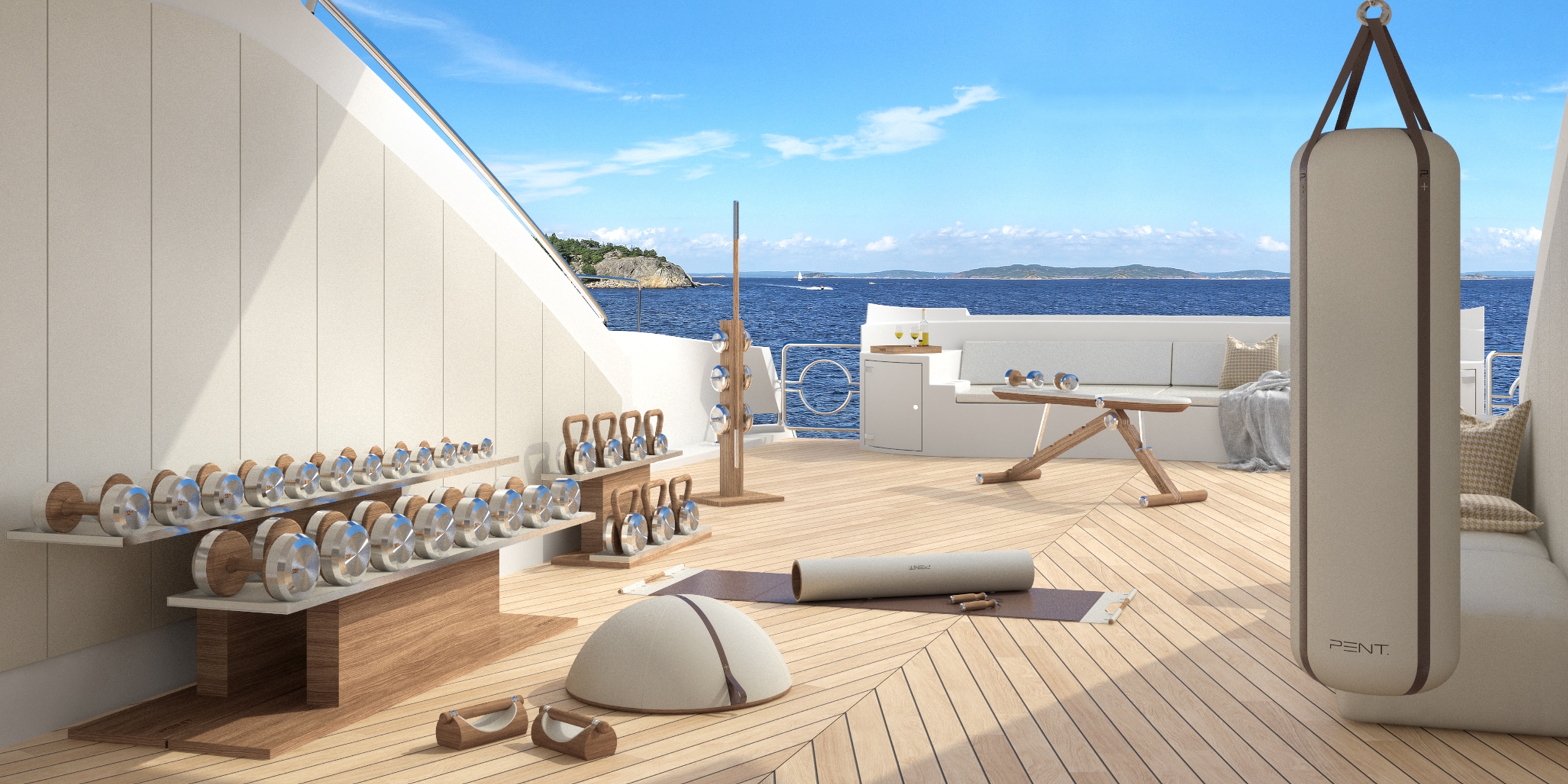Will At-Home Fitness Change the Way We Exercise?
By: Emma Reynolds
The pandemic has changed the way we think about our homes: The more versatile they are, the better. In the past two years, the way—and where—we exercise has completely changed. Home gyms and at-home workout equipment is no longer a luxury; for most, it’s a necessity.
 The indoor pool at Olympia Dumbo in Brooklyn, NY.
(Photo Credit: MARCH)
The indoor pool at Olympia Dumbo in Brooklyn, NY.
(Photo Credit: MARCH)
 The tennis courts at Olympia Dumbo in Brooklyn, NY.
(Photo Credit: MARCH)
The tennis courts at Olympia Dumbo in Brooklyn, NY.
(Photo Credit: MARCH)
 The outdoor swimming pool at Olympia Dumbo in Brooklyn, NY.
(Photo Credit: MARCH)
The outdoor swimming pool at Olympia Dumbo in Brooklyn, NY.
(Photo Credit: MARCH)
 The bowling alley at Olympia Dumbo in Brooklyn, NY.
(Photo Credit: MARCH)
The bowling alley at Olympia Dumbo in Brooklyn, NY.
(Photo Credit: MARCH)
With pandemic mandates shifting all the time, it’s difficult to rely on your local gym for staying fit. Luckily, there are plenty of chic options for exercising on your own terms, from sleek, integrated pieces of equipment to fashion-forward gym accessories. Even luxury condominiums are focusing on state-of-the-art gyms and wellness-centric amenities, like those at Olympia Dumbo. In fact, wellness amenities were crucial to the developers of Olympia; there is an indoor lap pool, steam room, juice bar, dry sauna, tennis court, movement studio, boxing gym, spin studio, and fitness center with state-of-the-art equipment.
While Peloton shares have plummeted (for myriad reasons; one of which is that gyms are reopening), that’s not to say that all interest in home gyms is waning. Fitness software company Mindbody reported that just 7% of their users in 2019 live-streamed their workouts; that number jumped to more than 80% during the pandemic. The company also found that those who work from home are more likely to exercise at home. And if people are live-streaming their workouts or exercising at home, it’s important they have the best equipment available.
 Photo Credit: Technogym
Photo Credit: Technogym
Companies like Scavolini and Fitness Design Group are also installing design-forward gyms so you can exercise in style without having your workout space clash with the rest of your home. And for city apartments or smaller spaces, gone are the days of basic dumbbells and accessories. Brands are elevating their standards to create pieces using the finest leather, wood, and steel, including Ergatta, which makes a handcrafted wooden rower that deserves to be shown off, and Mirror, producer of an invisible (well, almost) interactive home gym that doubles as a full-length mirror and personal training device.
When it comes to machinery, Italian company Technogym is one of the world’s most popular fitness lines, and for good reason. An eight-time supplier to the Olympic Games, their equipment, including treadmills, bikes, recline bikes, elliptical trainers, and strength machines, has been rigorously tested by the most elite athletes in the world, and each machine is backed by three decades of biomechanical experience and feedback. Technogym’s luxury Personal Line, designed by Antonio Citterio, the architect behind Arte Surfside, fuses functionality and style. Each piece has polished steel and aluminum accents, leather upholstery, and an elegant aesthetic. Technogym doesn’t stop there; the company has a comprehensive interior design service that can outfit an entire gym to your exacting standards. The brand even partnered with Dior for an exclusive collaboration earlier this year.
“We believe the future of the fitness and wellness sector will be hybrid,” says Nerio Alessandri, founder and CEO of Technogym. “In the future, people will train both at home and at the gym, the same way they go to the restaurant and at the same time use home delivery services. People will train in the convenience of their homes, but they will also visit fitness clubs to look for relationships, a variety of equipment and activities, and professionalism of the service.”
Even if you don’t have the space to install a full gym, brands like the Polish company PENT Fitness allow customers to stylize important gym accessories. At first glance, PENT’s products look like chic pieces of decor rather than workout equipment, which is why the brand is favored among the jet set and yachting crowd. PENT installs full gyms aboard superyachts, hotels, and residences, but they also sell dumbbells, kettlebells, wall bars, benches, push-up bars, boxing gloves, yoga mats, punching bags, jump ropes, and more. They use only the finest wood, steel, leather, and bronze in constructing their equipment, and have matching accessory sets to create an exceptionally polished look. Pieces are also customizable. You can even engrave family crests, logos, signatures, or names onto any of the brand’s hand-assembled products. It’s like Hermès for workout equipment.
New portable and wearable fitness and tech also make it easy to track your progress, monitor your health, and get results without the need of an in-person trainer. For example, Mativ Smart Mat, announced at this year’s Consumer Electronics Show, is an interactive smart yoga mat that tracks your workout—it scans for movement 20 times per second—and analyzes your performance to see how effective your workout was. It also intelligently provides feedback to help you improve technique or form, no personal trainer needed. Also announced at CES, Liteboxer VR is a beat-driven boxing experience in a VR headset that gives you access to trainer-led classes and boxing matches, accompanied by upbeat music, in a virtual world. There’s also the Renpho AI Smart Bike, which uses artificial intelligence to personalize workouts based on your output and pace and includes an app with training programs.
No matter how tricked-out home gyms become, it’s hard to say if they will eradicate the desire for more formal gym memberships. Traditional gyms provide social contact, an escape from your space (especially if you work from home), and there are few satisfying substitutes for an in-person trainer adjusting your form and technique live in real time. Yet, as technology advances and the pandemic challenges remain, having access to both options doesn’t seem so bad.








